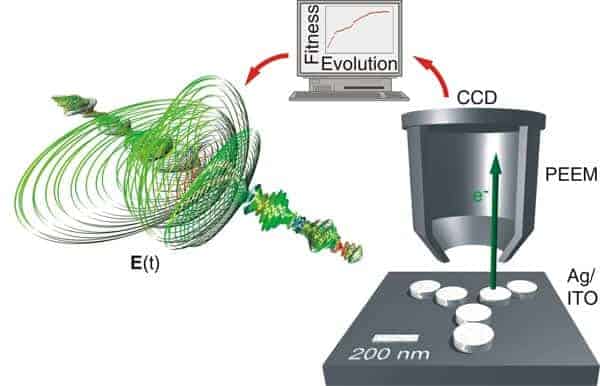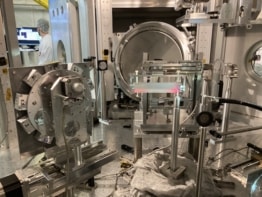Physicists in Europe have unveiled a new technique that can control the intensity distribution of laser pulses at dimensions that are much smaller than the wavelength of the laser light. The method combines pulse-shaping techniques with near-field optics and the researchers claim that it is a major step forward in the development of laser-based tools for the manipulation of matter on a very small length scales (Nature 446 301).

Diffraction effects normally mean that the position of a light beam can only be controlled over distances greater than half the wavelength of the light. However, theory suggests that this limitation could be overcome by taking advantage of the interference of light on very short length scales – so-called near-field optics.
Now, Walter Pfeiffer of Bielefeld University, Germany and colleagues in Germany and Spain, have found a way to harness near-field effects by using carefully controlled laser pulses.
The researchers fitted a source of femtosecond laser-pulses with a polarization pulse shaper, which controls how the polarization state of the pulses changes with time. Pulses were fired at a specially-designed nanostructure consisting of six tiny silver disks on a thin film (see figure). The disks each have a diameter of 180 nm and the entire structure measures 800 nm across. The wavelength of the laser light was 790 nm.
Firing the laser at the nanostructure resulted in near-field interference effects that created a pattern of light and dark regions on the nanostructure. By varying the polarization state of the laser pulses, the researchers were able to illuminate different regions of the nanostructure. The illuminated areas were less than 200 nm across, or about one quarter the wavelength of the laser light. The illumination was measured by photoemission electron microscopy (PEEM), which detects electrons that are emitted when light is absorbed by the surface.
Pfeiffer now wants to push the limits of the technique even further, and the team now intends to tackle the challenge of controlling the laser intensity in both space and time simultaneously. According to the team, the precise control of the laser light in time and space could be used in a range of applications, including new space- and time-resolved spectroscopic methods, steering of nano-mechanical processes in optical traps, control of chemical reactions in large molecular aggregates, and new schemes for quantum computation.


